Experience Alabama’s Great Outdoors at Cherokee Rock Village
Explore Cherokee Rock Village in Alabama, a stunning natural site with boulders, hiking trails, rock climbing, and rich Native American history.
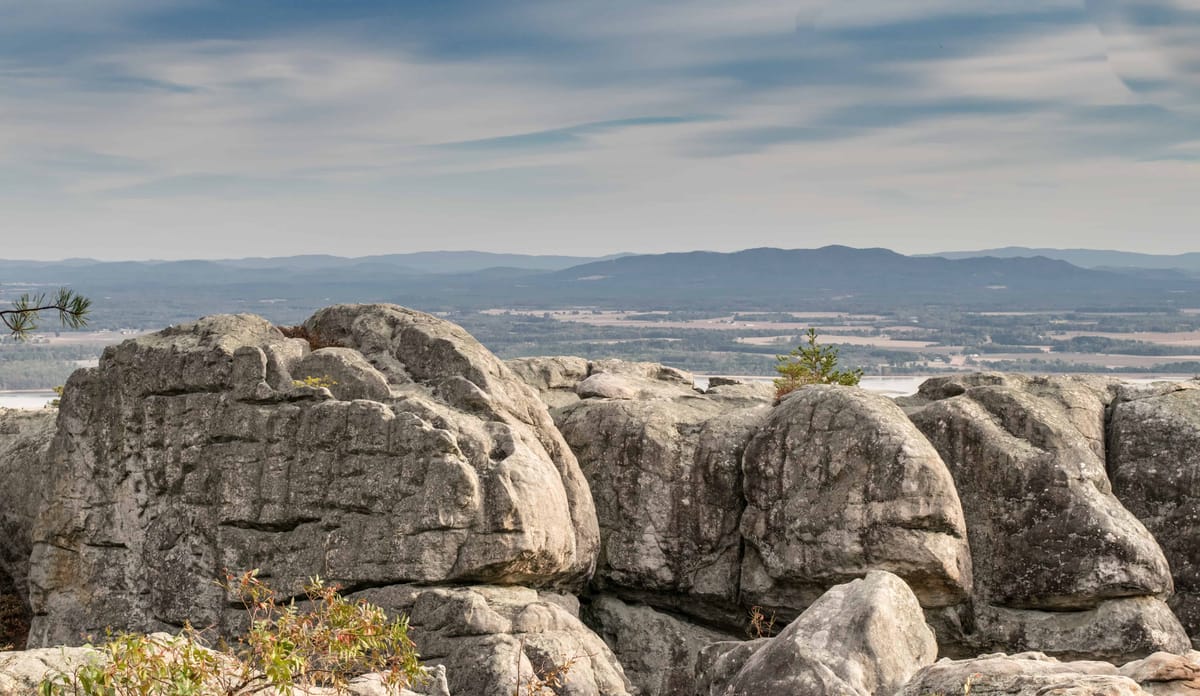
Native American Historical Sites Alabama – Destination Three
Have you ever been eye to eye with a swooping hawk? Take the concept of a bird’s-eye view to a new level at the Cherokee Rock Village near Leesburg, Alabama.
The Boulders
In the foothills of the Appalachian Mountains, Cherokee Rock Village is a massive formation of sandstone boulders. At the southern end of the Lookout Mountain range, this 200-acre public park offers spectacular panoramic views of Weiss Lake and the valley below.
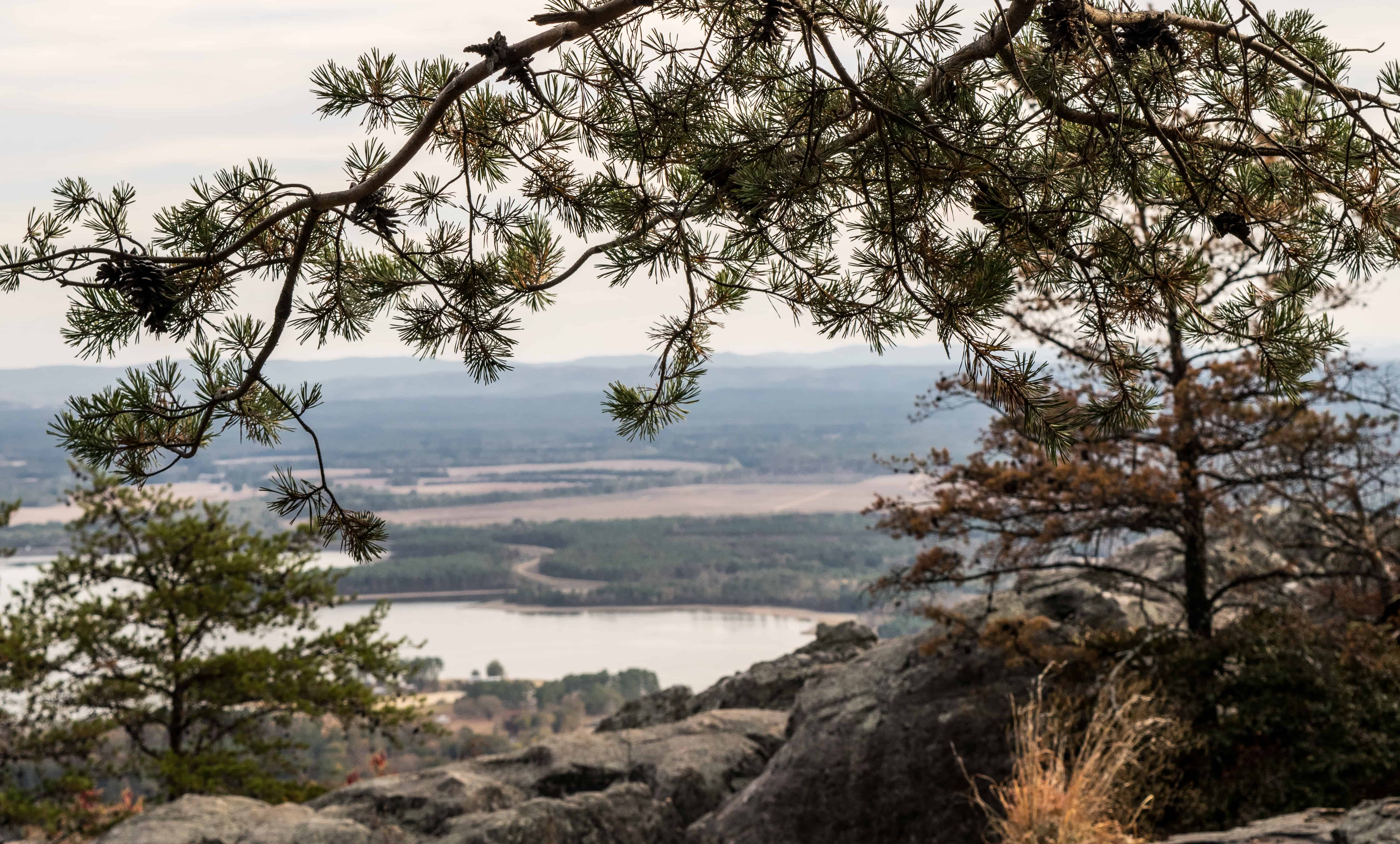
I followed the destination signs onto a narrow, paved road which offered all of the bumps and thrills of a roller coaster ride in a theme park. Rock City Avenue ends at the top of the mountain where I paid the $5 admission fee at the entry gate, received a trail map, and started my adventure.
The map in hand and sunset imminent, I choose to explore on a moderate trail. I walked towards a large outcropping of boulders, hopped over a few crevices and was amazed at the blue lake below. Birds of all sizes seem to be at play as they dive through the air and sing from nearby trees. Ridges of pine, oak, and hickory trees line the mountain. The boulder surfaces, worn slick through many years, present a challenge for even a sure-footed visitor. However, some paths and common routes are relatively easy to see, so I trek along where so many have passed before me.
A Place to Gather
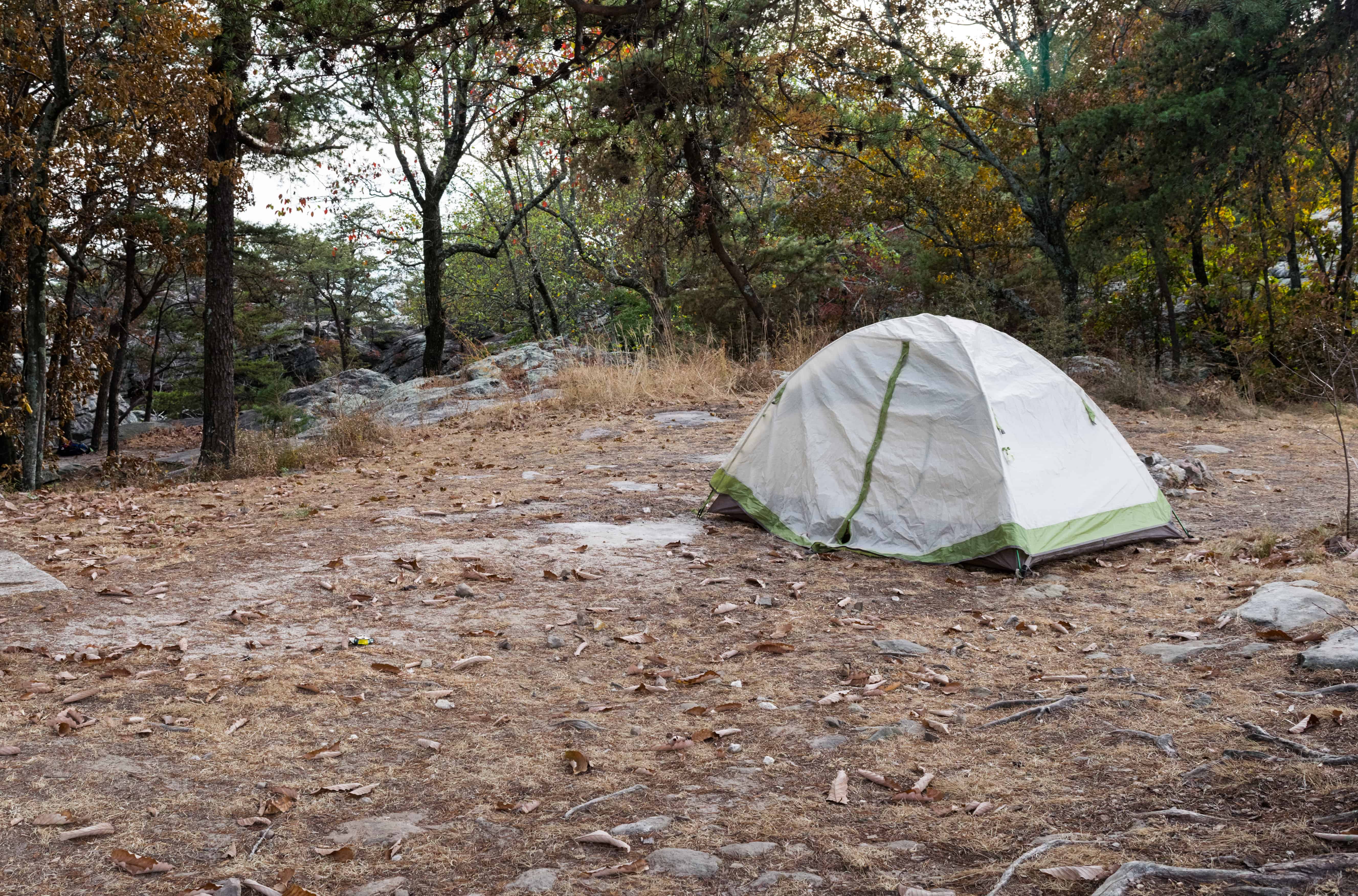
I walked among the park guests, choosing footpaths to the scenic view areas, each more stunning than the previous. Two girls are settled on an outcropping with books, enjoying literature while surrounded by the sounds of nature. A group of rock climbers chat eagerly about a particular climbing destination, with gear in tow. Families gather on flat boulder surfaces to watch the changing skies as nightfall approaches.
College students circle their tents nearby for a night of primitive camping in this place of stillness and tranquility. In so many ways, this appears to be a village of people, instead of only a village of rocks.
History of Cherokee Rock Village
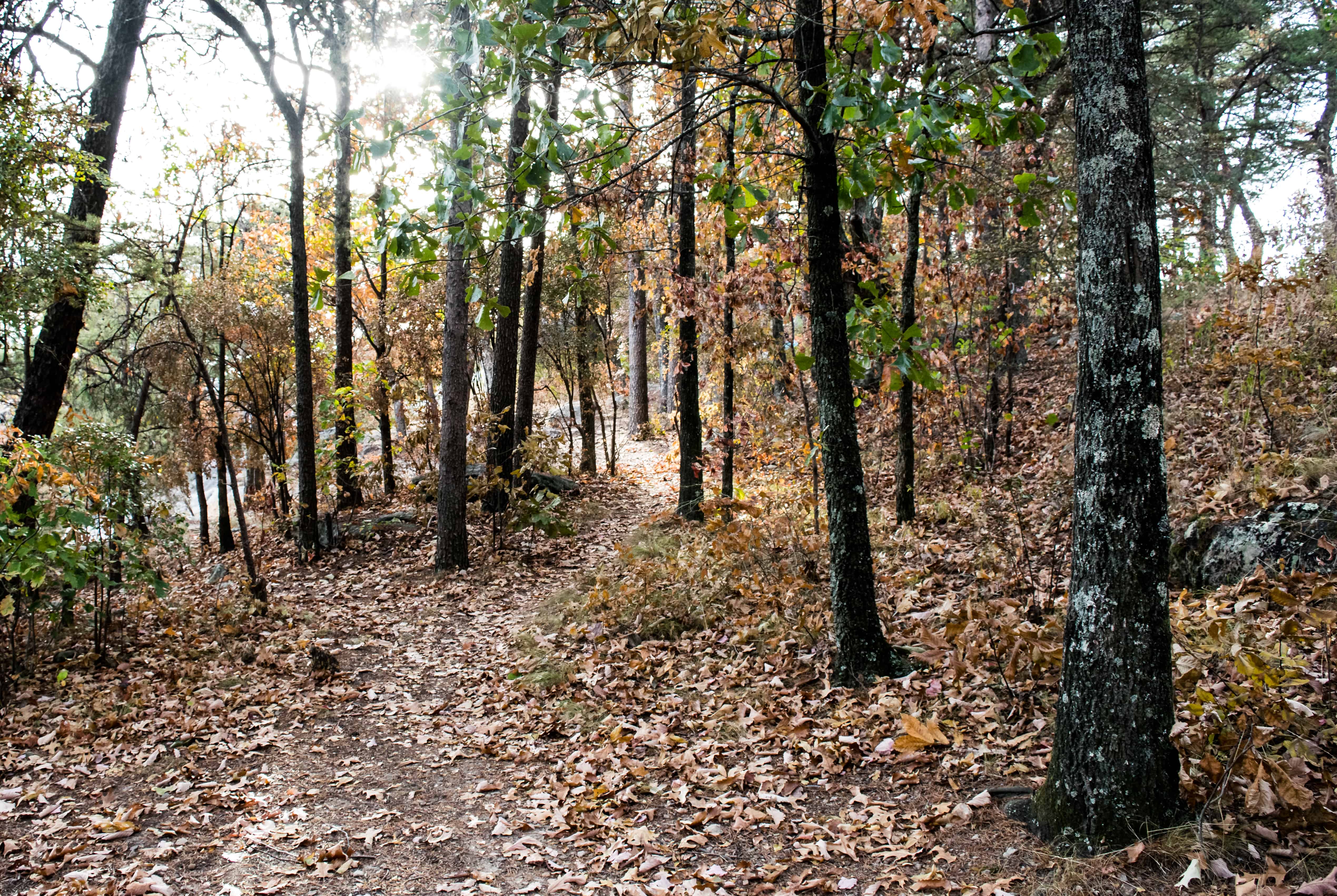
Also known as Little Rock City or Sand Rock, the Cherokee Rock Village is named for massive sandstone boulders that reach up to 200 feet high, creating the appearance of houses in a village. What began as a 20-acre land donation in 1974 is now a 200-acre park. The original donation required that the land would become a park with an access road.
The rugged terrain was cleared and paved in the 1980s, making the park accessible to tourists, campers, hikers, and climbers. Cherokee County, Alabama currently owns the park, administered by the Cherokee County Parks & Recreation Board.
Hiking
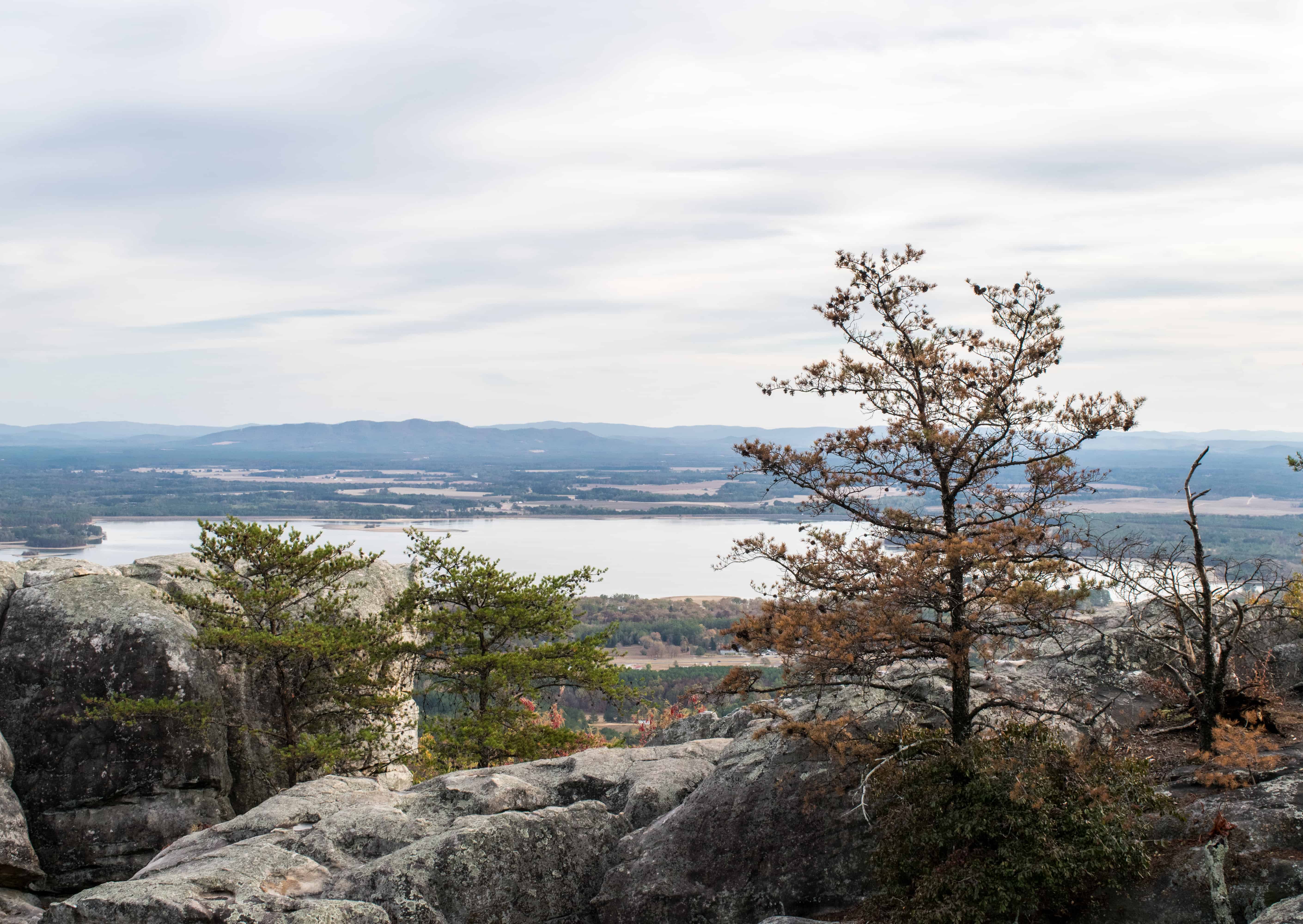
The huge stacks of boulders on the east-facing ridge are a favorite first stop for most visitors. The phrase “surrounded by nature” takes on new meaning. I am standing on top of some 300 million years of rock formations. The sparkling blue and silver Weiss Lake dominates the view in this postcard-ready scene.
Trees surround the lake and stretch upward along the mountain ridges. The sky fills the panoramic view – blue and bubbling with soft clouds. Near one of the Blue Trails, the geocache GC32H1F requires searchers to take a selfie photo at the natural arch, which is a fun search project for families and geocaching enthusiasts. The Red Trail (advanced) leads steeply downhill to the mountain base and additional primitive camping areas. The end of the trail does not have an exit. The return trip is precipitous and steeply uphill.
Rock Climbing
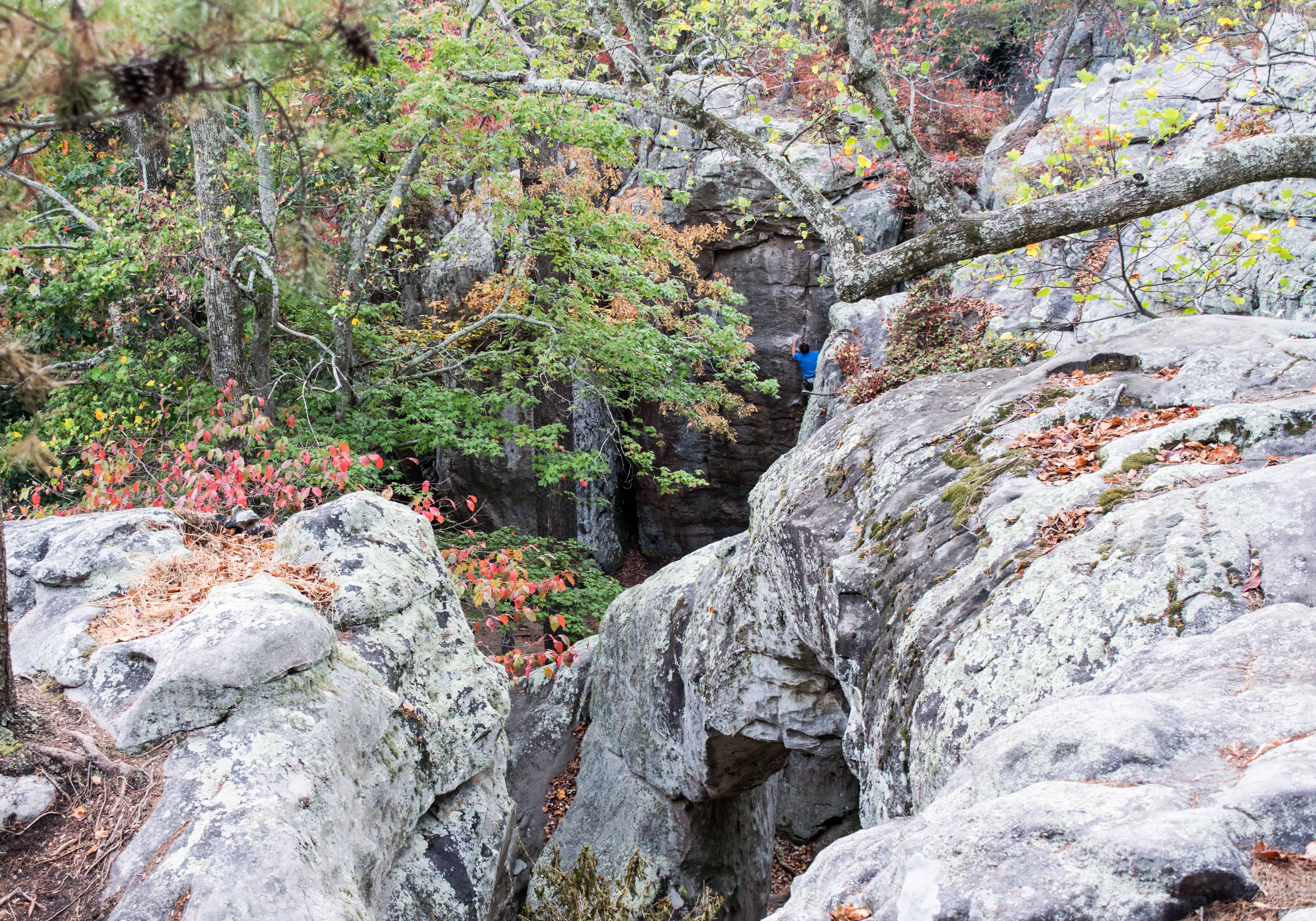
Cherokee Rock Village’s prominent boulders are believed to be a ceremonial site for the Native Americans who inhabited this region before the early 1800s. Imagine the efforts required to reach this location along footpaths through the dense forests. Consistent with this assertion, the Lookout Mountain Trail of today follows an old Indian trail, subsequently used by soldiers during the American Civil War.
Today, rock climbers have abundant options for top roping and rappelling in the park. Between the boulders, narrow vertical drop points are canyons that lead adventurer-seeking visitors into caves, under arches, and to towering pillars of sandstone. Diverse climbing routes and vertical rock faces provide challenges for climbers at any skill level. Some popular climbing routes have permanent anchors bolted to the stones.
Bird Watching
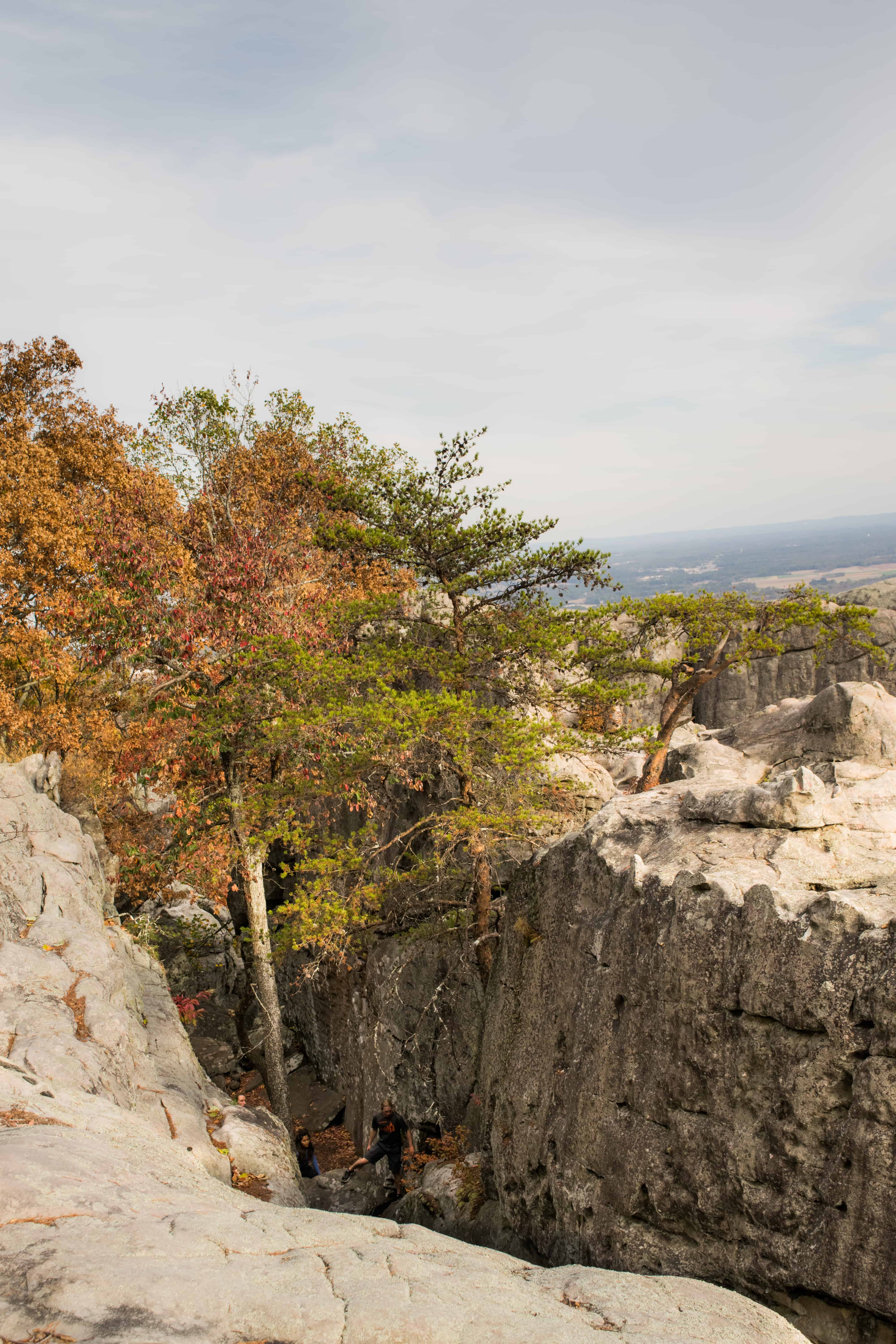
The Appalachian Highlands Birding Trail is one of eight bird-watching regions in Alabama. Birdwatchers on this trail will not be disappointed. Inside the park, the steep Red Trail leads to open skies areas to watch for the soaring larger birds of prey, seeking their feasts. Hawks are typically visible from mid-September through late November, but some remain in the region year-round, enjoying the temperate southern climate. Such smaller fowl as swallows and swifts fly throughout the park. The small, migratory Eastern Phoebes are interesting to find while searching with binoculars for their nests in the rock clefts.
If you are looking for outdoor activity in a serene location with primitive camping and RV accommodations, look no further than Cherokee Rock Village.
Fees
Park entry is $5 per car or $10 for a passenger van. The yearly pass is $30 (online) or $25 at the gate. Primitive camping is $10 per night for cars and $20 per night for buses or recreational vehicles (RV). Firewood bundles are available at the camp store for $6 per bundle.
For More Information on Visiting the Area
Cherokee Rock Village, 2000 County Road 70, Leesburg, AL. 35983, (256) 927-7275
Cherokee County Chamber of Commerce Site
Follow Gwyn’s journey Native American Historical Sites in Alabama in her MilesGeek column, Small Towns, Big Cities.




